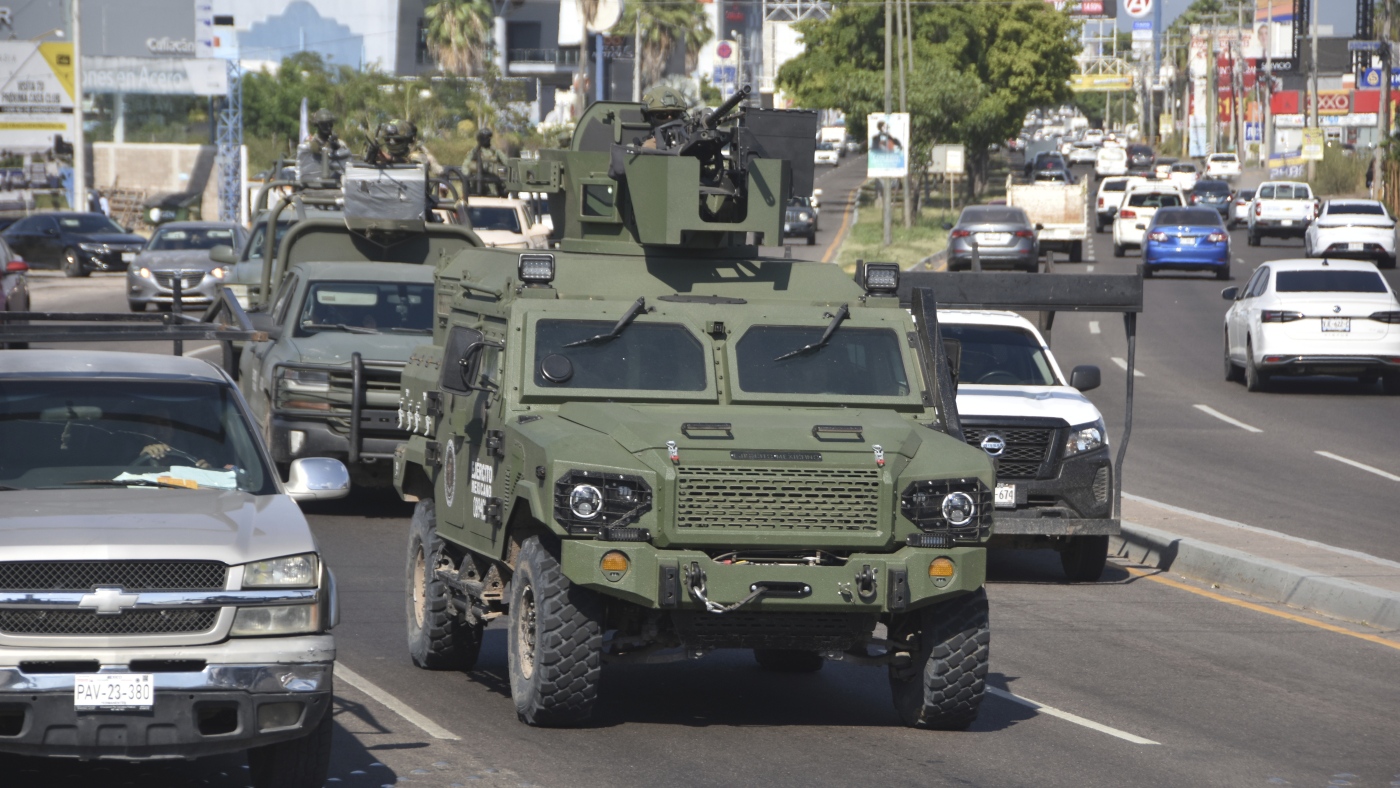The recent surge of violence in Sinaloa, Mexico, has drawn international attention to the escalating conflict within the Sinaloa Cartel, one of the most powerful and notorious criminal organizations in the world. The state, known for its role in drug trafficking, has become a battleground for rival factions vying for control over lucrative drug routes. The violence has reached unprecedented levels, with approximately 20 individuals killed in a single day, including four decapitated bodies displayed in a gruesome manner on a bridge in Culiacán, the state capital. This alarming escalation underscores the challenges faced by local authorities and the broader implications for Mexico’s ongoing struggle against organized crime.
The Sinaloa Cartel, once led by Joaquín “El Chapo” Guzmán, has long been a dominant force in the global drug trade, particularly in the trafficking of narcotics such as fentanyl and methamphetamines into the United States. However, since El Chapo’s arrest and extradition, the cartel has experienced significant internal strife, with factions competing for dominance over key territories and trafficking corridors. This power struggle has led to violent clashes, turning cities like Culiacán into hotspots for conflict. The recent surge in violence is a stark reminder of the cartel’s internal fractures and the brutal tactics employed to assert control. Public displays of violence, such as hanging decapitated bodies, serve as both a warning to rival groups and a grim testament to the cartel’s ruthlessness and the challenges faced by local authorities in containing such brutality.
The immediate incident in Culiacán highlighted the intensity of the conflict, with a series of gunfights, killings, and public displays of brutality occurring within a short period. The discovery of four decapitated bodies hanging from a bridge sent shockwaves through the community, reflecting the escalating violence designed to instill fear and assert dominance. Authorities reported a total of 20 deaths linked to this surge, underscoring the scale and intensity of the conflict. Such killings disrupt the social fabric, paralyzing daily life and undermining the sense of security among residents. The city of Culiacán, once relatively stable compared to other Mexican cities, is increasingly seen as a danger zone, alarming both citizens and policymakers.
The root causes of this violence extend beyond mere rivalry. Several factors contribute to the escalation, including a leadership vacuum resulting from the arrest and imprisonment of key cartel bosses, economic incentives tied to control over drug routes, and a weak state response compromised by corruption and inadequate resources. Additionally, the social impacts of the violence are profound, with communities bearing the brunt of the conflict. Fear restricts mobility, economic activity, and basic freedoms, exacerbating social instability. These dimensions compound the violence, creating cycles that are difficult to break.
The consequences of the surge in violence in Sinaloa are far-reaching. The humanitarian crisis resulting from the loss of life, trauma, and displacement affects families and communities directly, exacerbating social instability. Economically, fear and insecurity hinder businesses, deter investment, and challenge local governance. The security dilemma is further complicated by police and military deployments that often heighten tensions without addressing root causes, sometimes leading to collateral damage or abuses. Moreover, the violence can spread to neighboring regions, aggravating national security challenges. The city of Culiacán, once relatively stable, is increasingly seen as a danger zone, alarming both citizens and policymakers.
Addressing the violence in Sinaloa presents multifaceted obstacles. The cartel’s deep roots in local economies and politics make eradication or reform exceedingly difficult. Corruption and impunity within law enforcement agencies undermine the rule of law, while poverty, lack of opportunities, and weak social infrastructure foster environments where cartels can recruit easily. Additionally, the persistent international demand for narcotics fuels cartel revenues and incentives for violent disputes. Without a comprehensive approach that addresses these intertwined factors, violence is likely to persist or worsen.
To curb the violence, a shift from reactive security measures to a multi-dimensional strategy is necessary. Enhancing law enforcement integrity and capacity, empowering local populations through social programs, creating legitimate economic opportunities, and fostering regional and international cooperation are crucial steps. Targeted actions focusing on dismantling leadership hierarchies and cutting cartel financing streams can also be effective. Without these comprehensive efforts, the bloody saga in Sinaloa may continue to unfold with tragic consequences.
In conclusion, the recent surge of cartel violence in Sinaloa, marked by the brutal killings of 20 individuals and the chilling spectacle of decapitated bodies displayed publicly, lays bare the vicious internal conflict tearing apart one of Mexico’s most notorious criminal organizations. This bloody struggle for control not only devastates communities but also challenges the fabric of law, governance, and security in the region. Confronting this crisis demands more than forceful repression; it necessitates a nuanced understanding of the political, social, and economic dynamics that sustain cartel power. Only through a well-rounded approach that prioritizes justice, development, and community resilience can Sinaloa hope to stem the tide of violence and restore a sense of peace and normalcy to its people. The cost of failure is measured not just in bodies but in lost hope and fractured futures.








